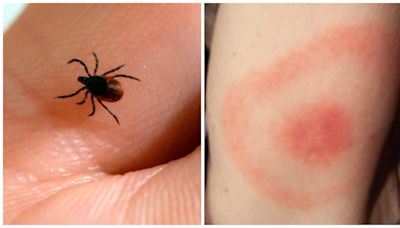Search results
People also ask
What causes Lyme disease?
How do humans get Lyme disease?
Is Lyme disease a bacterial infection?
Feb 10, 2023 · Lyme disease is an illness caused by borrelia bacteria transmitted by tick bites. Learn about the stages of Lyme disease, how to recognize the signs and symptoms, and how to protect yourself from tick bites.
Lyme disease is a bacterial infection that can be spread by black-legged ticks. Learn how to avoid ticks, where ticks live, and how to treat Lyme disease with antibiotics. Find out the symptoms, diagnosis, and complications of Lyme disease.
Lyme disease, also known as Lyme borreliosis, is a tick-borne disease caused by species of Borrelia bacteria, transmitted by blood-feeding ticks in the genus Ixodes. [3] [8] [9] The most common sign of infection is an expanding red rash, known as erythema migrans (EM), which appears at the site of the tick bite about a week afterwards. [1] .
- A week after a bite
- Borrelia spread by ticks
Lyme disease is an infection caused by the bacteria Borrelia burgdorferi, which is most commonly transmitted by a tick bite. Learn about the risk factors, symptoms, diagnosis, treatment, and prevention of this condition from Johns Hopkins Medicine.
Agents. Borrelia burgdorferi, B. mayonii. Where Found. Lyme disease is most frequently reported from the upper midwestern, northeastern, and mid-Atlantic states where it is spread by Ixodes scapularis ticks. Some cases are also reported from northern California, Oregon, and Washington, where it is spread by Ixodes pacificus ticks.
Jan 27, 2020 · Lyme disease is a bacterial infection you get from the bite of an infected tick. It can cause a rash, fever, headache, fatigue, and other symptoms. Prompt treatment can help you recover quickly. Learn how to prevent, diagnose, and treat Lyme disease from MedlinePlus.
The combination of the skin lesion and flu-like symptoms are the primary manifestations of acute stage Lyme disease, although the rash and flu-like symptoms are not always present. Acute Lyme disease is not associated with typical cold-like symptoms of runny nose, prominent cough, or prominent diarrhea.


